Data-Enhanced Variable Start-Up Pressure Gradient Modeling for Production Prediction in Unconventional Reservoirs
Abstract
1. Introduction
2. Physics-Based Modeling in Unconventional Reservoirs
2.1. Flow Mechanisms in Ultra-Low-Permeability Systems
2.1.1. Start-Up Pressure Gradient
2.1.2. Pressure-Sensitive Permeability
2.1.3. Variable Start-Up Pressure Gradient
2.2. Mathematical Formulation of Physics-Based Models
2.2.1. Pressure Distribution
2.2.2. Permeability Evolution
2.2.3. Pressure Gradient
2.3. Physics-Based Production Models
2.3.1. Fluid Volume
2.3.2. Productivity
3. Data-Enhanced Production Prediction in Unconventional Reservoirs
3.1. Physics-Informed Neural Networks for Production Prediction
3.2. PINN-Enhanced Production Calculation Models
3.3. Composite Loss Function Design and Training Strategy
4. Evaluation and Interpretation of Data-Enhanced Model
4.1. Evaluation of Data-Enhanced Model
4.1.1. Validation Using Field Production Data
4.1.2. Comparative Assessment of Modeling Paradigms
4.1.3. Benchmarking Against Commercial Simulators and Recent Data-Driven Models
4.1.4. Limitations of the Data-Enhanced Model
4.2. Parameter Consistency and Robustness Analysis
4.2.1. Physical Consistency of Data-Enhanced Parameters
4.2.2. Sensitivity Analysis
4.2.3. Uncertainty Analysis
4.3. Field Deployment and Real-Time Adaptation
5. Conclusions
- (1)
- From physics-based modeling, the study clarified the combined effects of non-Darcy flow, start-up pressure gradient, and pressure-sensitive permeability in ultra-low-permeability systems. By deriving the variable start-up pressure gradient, the research established a mechanistic representation of coupled flow behaviors. This formulation enabled the construction of mathematical and production models that preserve the fundamental physical mechanisms of unconventional reservoirs.
- (2)
- The data-enhanced model incorporating physics-informed neural networks was proposed to overcome the limitations of purely physics-based or purely data-driven approaches. By embedding prior physical models into the learning process, the framework achieved improved accuracy, robustness, and generalizability in production prediction.
- (3)
- Systematic evaluation confirmed the data-enhanced model’s strong consistency with field production data, reliable parameter corrections, and robust performance under sensitivity and uncertainty. A standardized workflow for field deployment was developed, demonstrating its potential for real-time adaptation and decision support in unconventional reservoir management.
Author Contributions
Funding
Data Availability Statement
Conflicts of Interest
References
- Grieser, B.; Bray, J. Identification of Production Potential in Unconventional Reservoirs. In Proceedings of the SPE Oklahoma City Oil and Gas Symposium, Oklahoma City, OK, USA, 31 March–3 April 2007. Paper Number: SPE-106623-MS. [Google Scholar]
- Kaura, A.M.; Andrawus, Y.; Ibrahim, A.Y. Geophysics, Geology, Formation Evaluation, and Reservoir Characterization in Unconventional Resources. In Unconventional Resources; CRC Press: Boca Raton, FL, USA, 2025; pp. 40–122. [Google Scholar]
- Wang, L.; Yao, Y.; Luo, X.; Sun, Y.; Liu, D.; Sun, Z.; Cheng, L. A Critical Review on Intelligent Optimization Algorithms and Surrogate Models for Conventional and Unconventional Reservoir Production Optimization. Fuel 2023, 350, 128826. [Google Scholar] [CrossRef]
- Huang, Y.; Cai, J.; Li, X. A review on threshold pressure gradient in low-permeability reservoirs: Concept, measurement, and modeling. Energies 2020, 13, 2785. [Google Scholar]
- Wang, L.; Liu, H.; Zhang, L. A new model for non-Darcy flow in low-permeability porous media considering variable threshold pressure gradient. J. Pet. Sci. Eng. 2021, 202, 108543. [Google Scholar]
- Li, D.; Yao, Y.; Zhang, H. Pressure-dependent threshold pressure gradient and its impact on production performance in tight gas reservoirs. J. Nat. Gas Sci. Eng. 2019, 68, 102899. [Google Scholar]
- Yu, Q.; Liu, Y.; Liu, X.; Yao, D. Experimental Study on Seepage Flow Patterns in Heterogeneous Low-Permeability Reservoirs. J. Pet. Explor. Prod. Technol. 2018, 8, 589–596. [Google Scholar] [CrossRef]
- Li, X.; Yang, Z.; Li, S.; Huang, W.; Zhan, J.; Lin, W. Reservoir Characteristics and Effective Development Technology in Typical Low-Permeability to Ultralow-Permeability Reservoirs of China National Petroleum Corporation. Energy Explor. Exploit. 2021, 39, 1713–1726. [Google Scholar] [CrossRef]
- Dong, D.P.; Feng, W.G.; Zhao, J.F. A Method for Relative Permeability Calculation Considering Start-Up Pressure Gradient. Nat. Gas Ind. 2007, 27, 95–96. [Google Scholar]
- Bayoumi, A.; El-Emam, N.; El-Assal, A. A New Method for Predicting Pressure Gradient in Multiphase Flow Systems. J. Jpn. Pet. Inst. 1994, 37, 147–154. [Google Scholar] [CrossRef]
- Bear, J. Dynamics of Fluids in Porous Media; American Elsevier Publishing Company: New York, NY, USA, 1972. [Google Scholar]
- Fatt, I.; Davis, T.S. Reduction in Permeability with Overburden Pressure. J. Pet. Technol. 1952, 4, 16. [Google Scholar] [CrossRef]
- Wang, L.; Liu, H.; Zhen, S.; Liu, X.; Song, Y. Quantitative Research on Stress Sensitivity of Low-Permeability Reservoir. Acta Pet. Sin. 2009, 30, 96–99. [Google Scholar]
- Tohidi, A.; Fahimifar, A.; Rasouli, V. Effect of Non-Darcy Flow on Induced Stresses Around a Wellbore in an Anisotropic In-Situ Stress Field. Sci. Iran. 2019, 26, 1182–1193. [Google Scholar] [CrossRef]
- Liu, W.C.; Liu, Y.W.; Niu, C.C.; Han, G.F.; Wan, Y.Z. Numerical Investigation of a Coupled Moving Boundary Model of Radial Flow in Low-Permeable Stress-Sensitive Reservoir with Start-Up Pressure Gradient. Chin. Phys. B 2016, 25, 024701. [Google Scholar] [CrossRef]
- Wang, X.; Sheng, J.J. Effect of Low-Velocity Non-Darcy Flow on Well Production Performance in Shale and Tight Oil Reservoirs. Fuel 2017, 190, 41–46. [Google Scholar] [CrossRef]
- Zhang, M.; Guo, P.; Liu, Y. Experimental determination of threshold pressure gradient in tight sandstone cores under reservoir conditions. J. Pet. Sci. Eng. 2022, 208, 109345. [Google Scholar]
- Xu, T.; Xiao, H.; Sun, H. Field-scale estimation of threshold pressure gradient from pressure buildup tests in low-permeability oil reservoirs. SPE Reserv. Eval. Eng. 2020, 23, 1245–1257. [Google Scholar]
- He, J.; Xu, S.; Li, Z. Physics-informed neural networks for multiphase flow inverse problems in heterogeneous media. Water Resour. Res. 2022, 58, e2021WR031489. [Google Scholar]
- He, Q.; Hao, Y.; Zhang, D. Physics-Informed Neural Networks for Forward and Inverse Modeling of Subsurface Flow in Heterogeneous Porous Media. Adv. Water Resour. 2023, 179, 104498. [Google Scholar]
- Wang, R.; Zhang, F.; Liu, Y.; Li, X. Physics-informed deep learning for production forecasting in shale gas reservoirs with variable threshold pressure gradient. J. Pet. Sci. Eng. 2023, 220, 111203. [Google Scholar]
- Raissi, M.; Perdikaris, P.; Karniadakis, G.E. Physics-informed neural networks: A deep learning framework for solving forward and inverse problems involving nonlinear partial differential equations. J. Comput. Phys. 2019, 378, 686–707. [Google Scholar] [CrossRef]
- Zhang, D.; Lu, L.; Guo, L.; Karniadakis, G.E. Quantifying total uncertainty in physics-informed neural networks for solving forward and inverse stochastic problems. J. Comput. Phys. 2019, 397, 108850. [Google Scholar] [CrossRef]
- Wang, Z. A Fast Physics-Based Data-Driven Surrogate Model for Unconventional Reservoirs with Rapid Decline and Well Interference. Geoenergy Sci. Eng. 2024, 237, 14. [Google Scholar] [CrossRef]
- Darcy, H. Les Fontaines Publiques de la Ville de Dijon; Dalmont: Paris, France, 1856. [Google Scholar]
- Forchheimer, P. Wasserbewegung Durch Boden. Z. Ver. Dtsch. Ing. 1901, 45, 1782–1788. [Google Scholar]
- Xu, J.; Guo, C.; Jiang, R.; Wei, M. Study on Relative Permeability Characteristics Affected by Displacement Pressure Gradient: Experimental Study and Numerical Simulation. Fuel 2016, 163, 314–323. [Google Scholar] [CrossRef]
- Ruan, M.; Wang, L.G. Low-Permeability Oilfield Development and Pressure-Sensitive Effect. Acta Pet. Sin. 2002, 23, 73–76. [Google Scholar]
- Zong, P.; Xu, H.; Tang, D.; Li, Y.; Wu, S.; Zhang, Y.; Wang, X. A Dynamic Prediction Model of Reservoir Pressure Considering Stress Sensitivity and Variable Production. Geoenergy Sci. Eng. 2023, 225, 211688. [Google Scholar] [CrossRef]
- Zhao, F.; Shen, R.; Gao, S.S.; Xu, G. Application and Calculation Method of Waterflood Front in Low Permeability Reservoir. J. Jpn. Petrol. Inst. 2015, 57, 271–275. [Google Scholar] [CrossRef]
- Wolfsteiner, C.; Durlofsky, L.J.; Khalid, A. Approximate Model for Productivity of Nonconventional Wells in Heterogeneous Reservoirs. SPE J. 2000, 5, 218–226. [Google Scholar] [CrossRef]
- Aifa, T. Neural Network Applications to Reservoirs: Physics-Based Models and Data Models. J. Pet. Sci. Eng. 2014, 123, 1–6. [Google Scholar] [CrossRef]
- Zhao, H.; Kang, Z.; Zhang, X.; Sun, Z.; Yao, J.; Luo, S. A Physics-Based Data-Driven Numerical Model for Reservoir History Matching and Prediction with a Field Application. SPE J. 2016, 21, 2175–2194. [Google Scholar]
- Ihunde, T.A.; Olorode, O. Application of Physics Informed Neural Networks to Compositional Modeling. J. Pet. Sci. Eng. 2022, 211, 110175. [Google Scholar] [CrossRef]
- Zhang, Y.; Jia, A. Production Performance Forecasting Method Based on Multivariate Time Series and Vector Autoregressive Machine Learning Model for Waterflooding Reservoirs. Energies 2021, 14, 7325. [Google Scholar] [CrossRef]

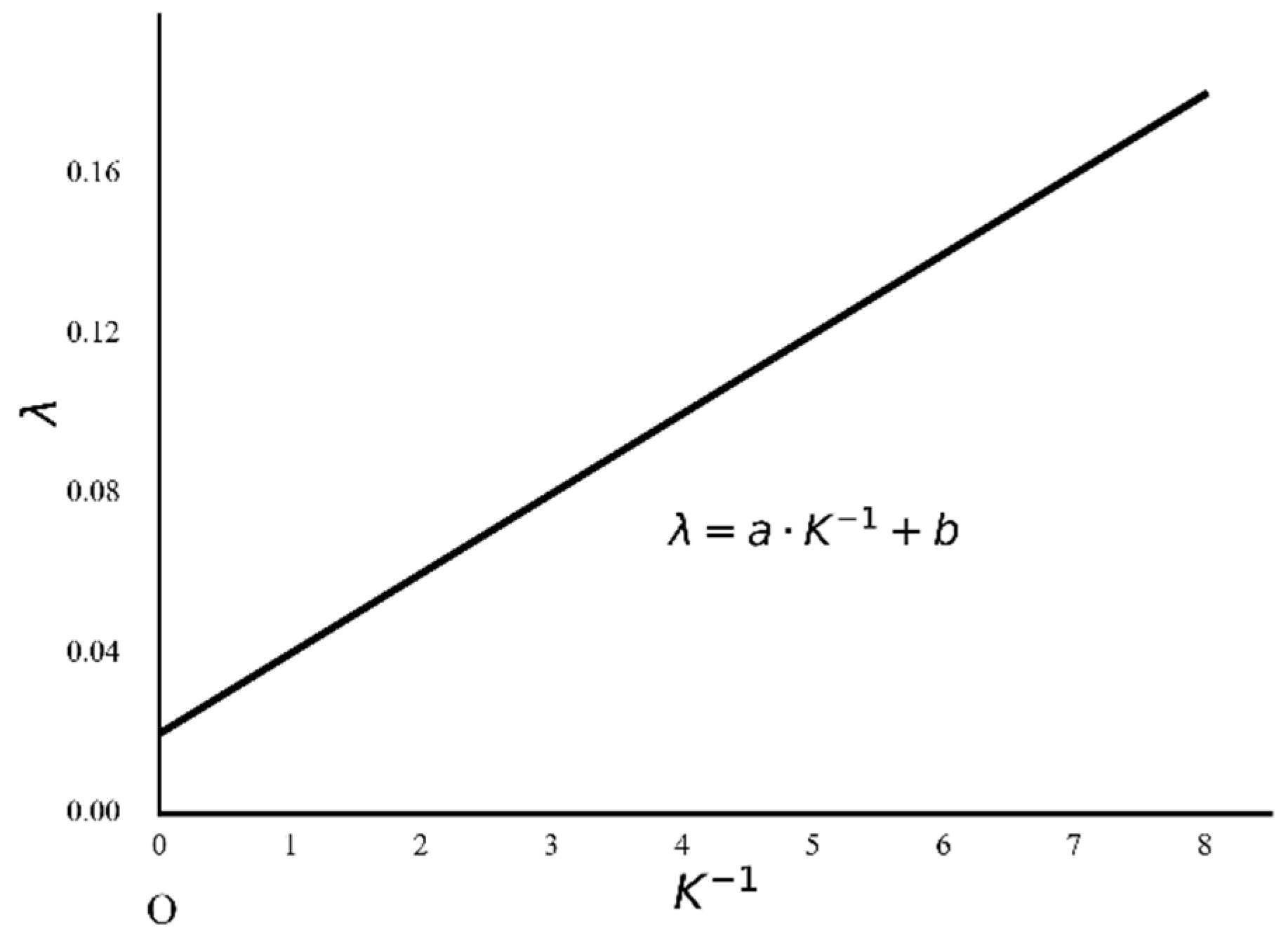

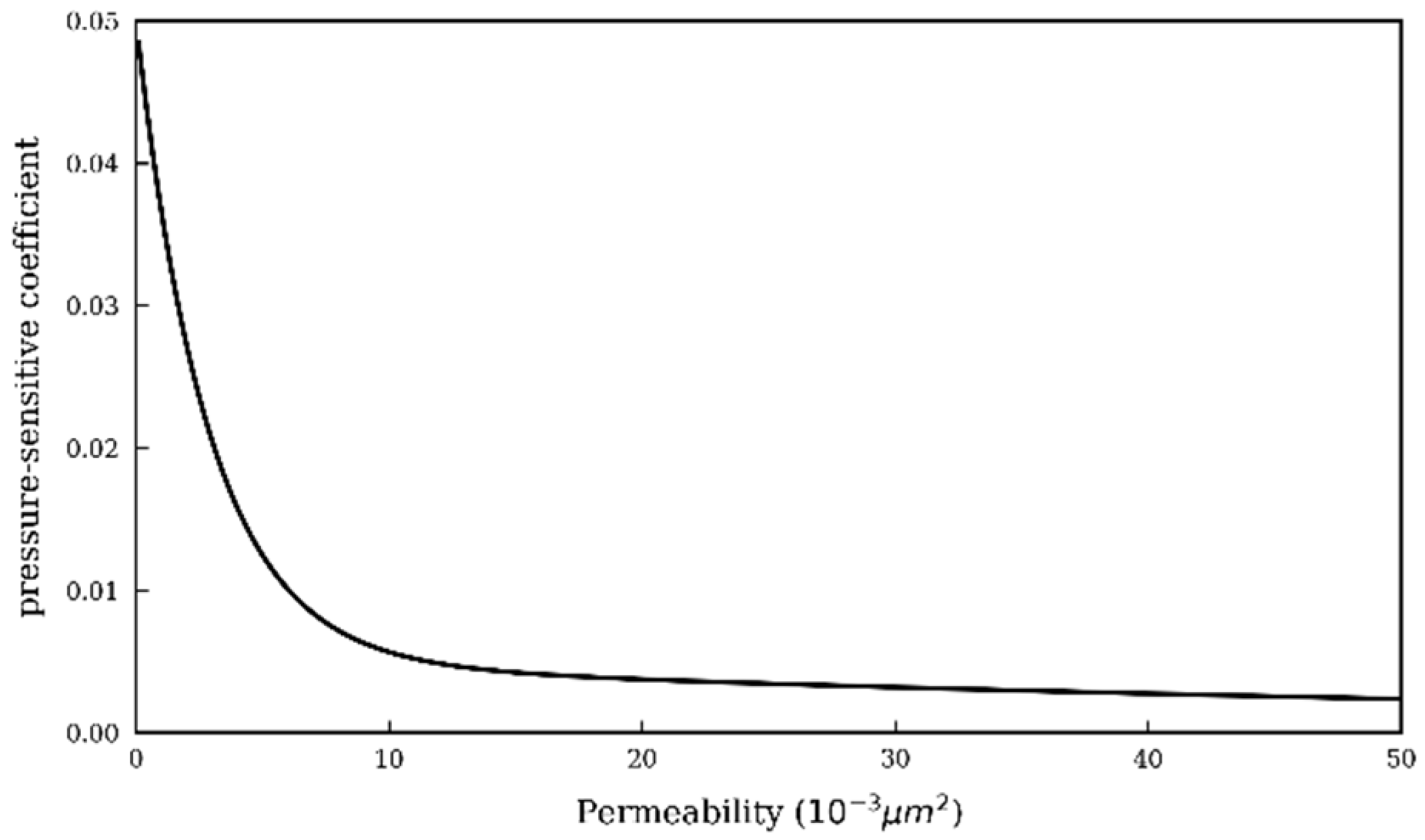
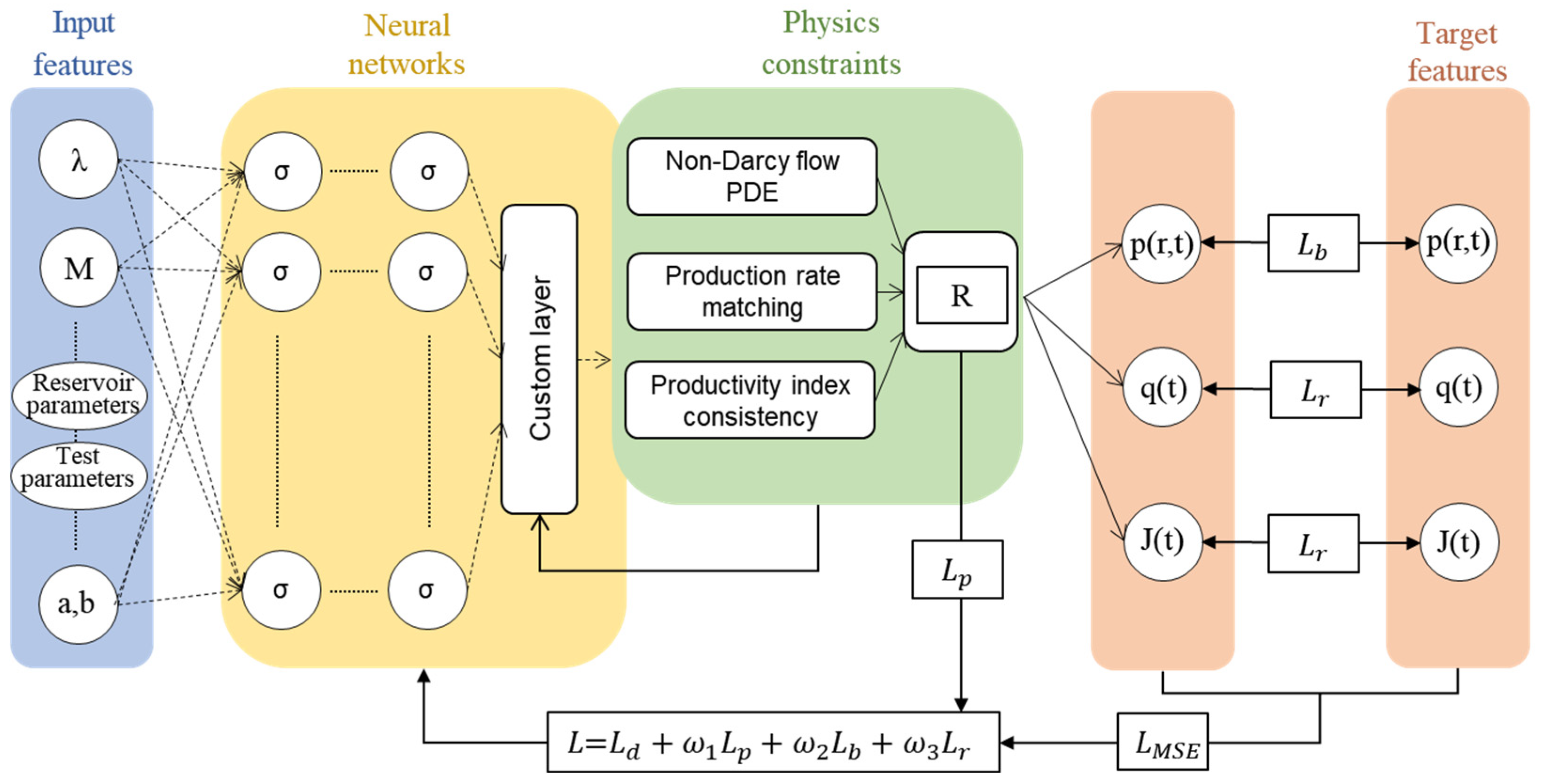
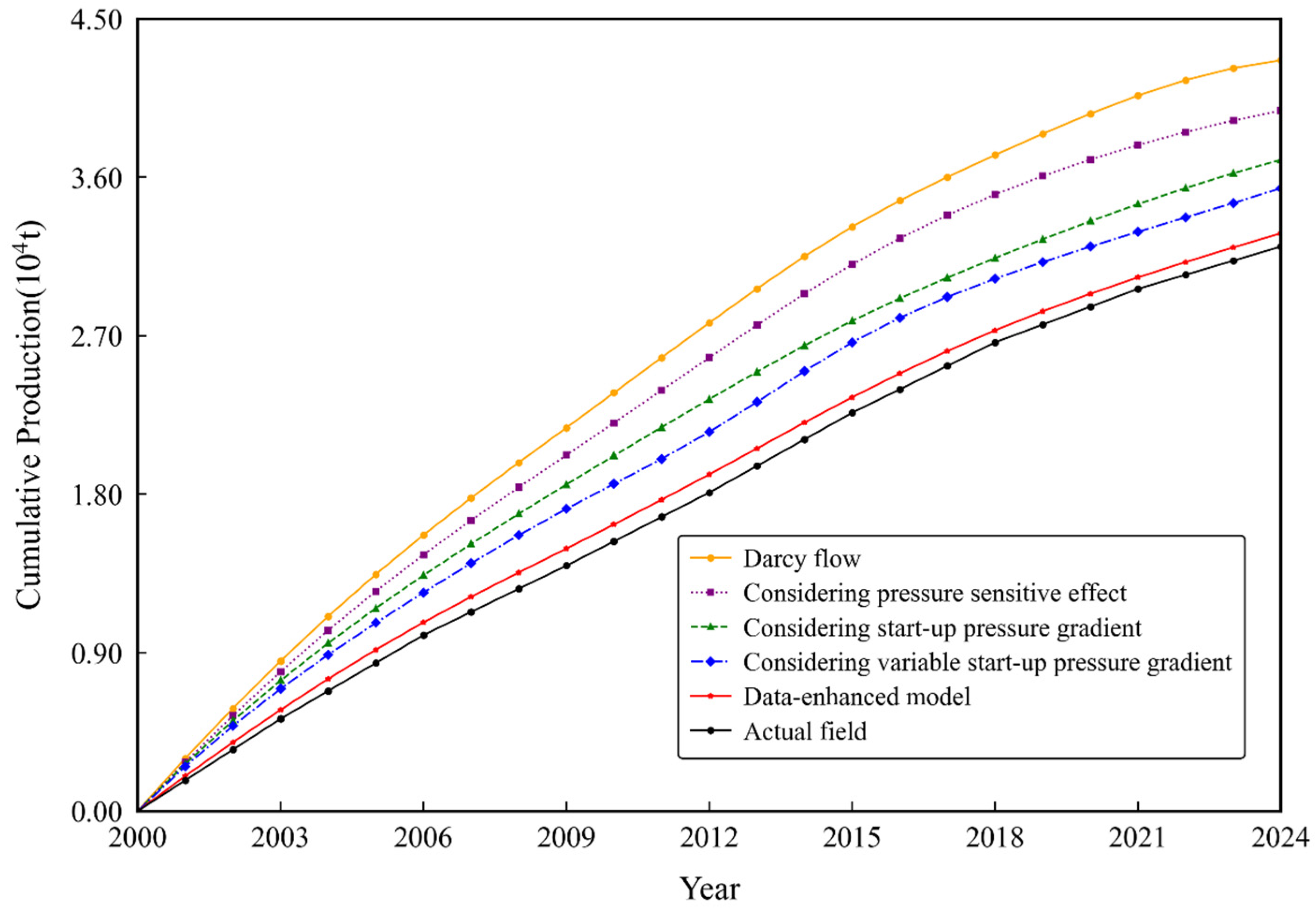



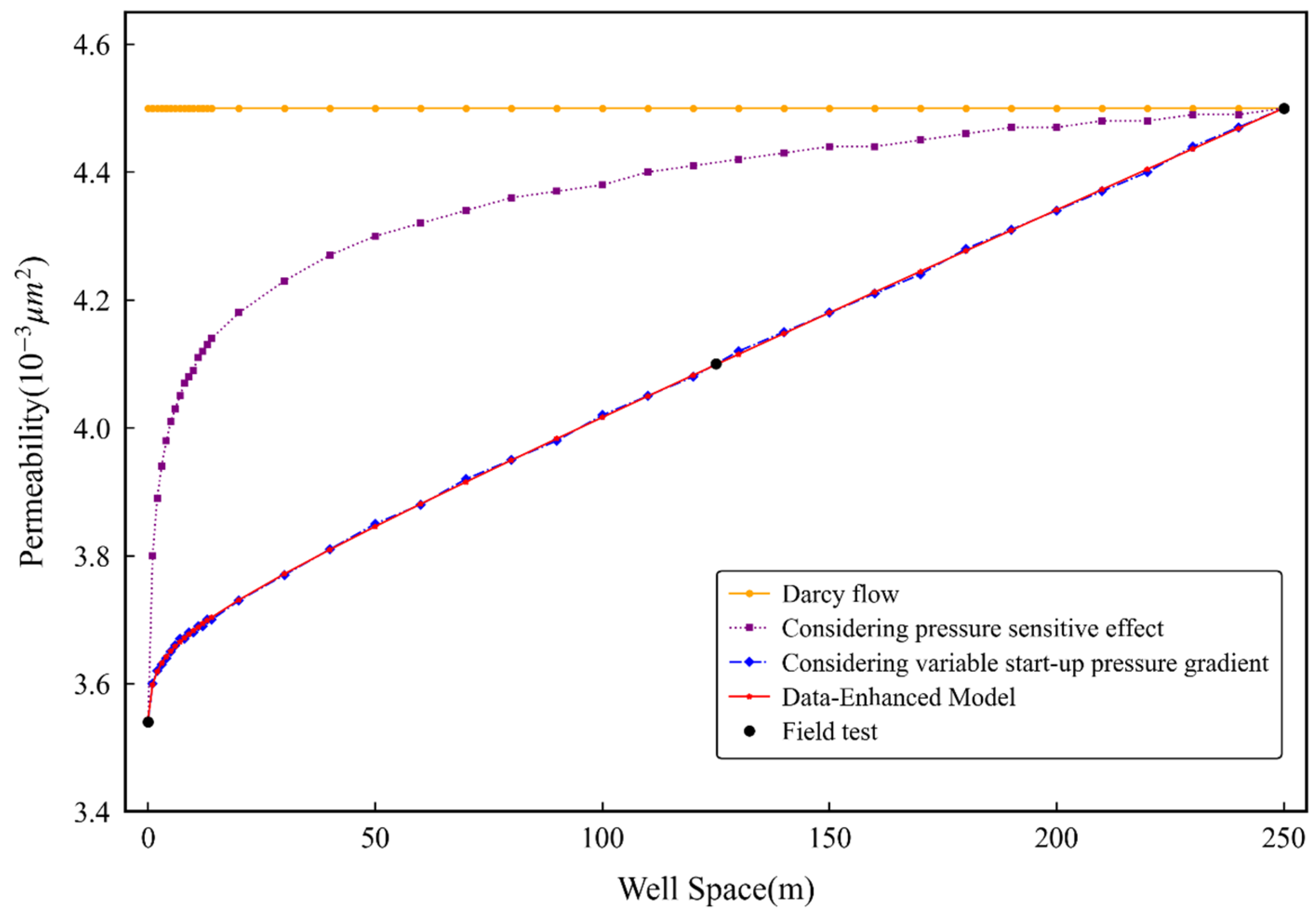

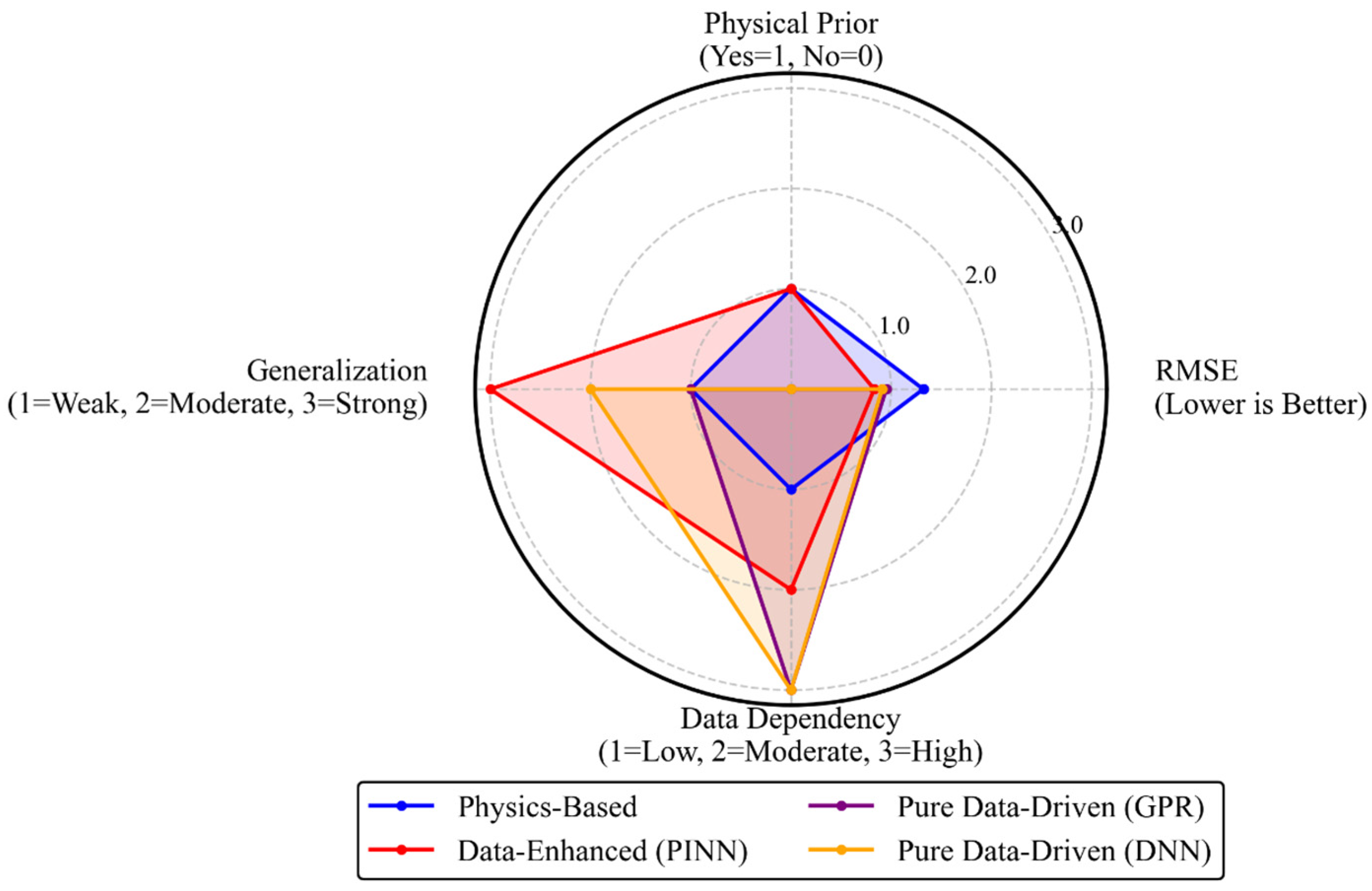

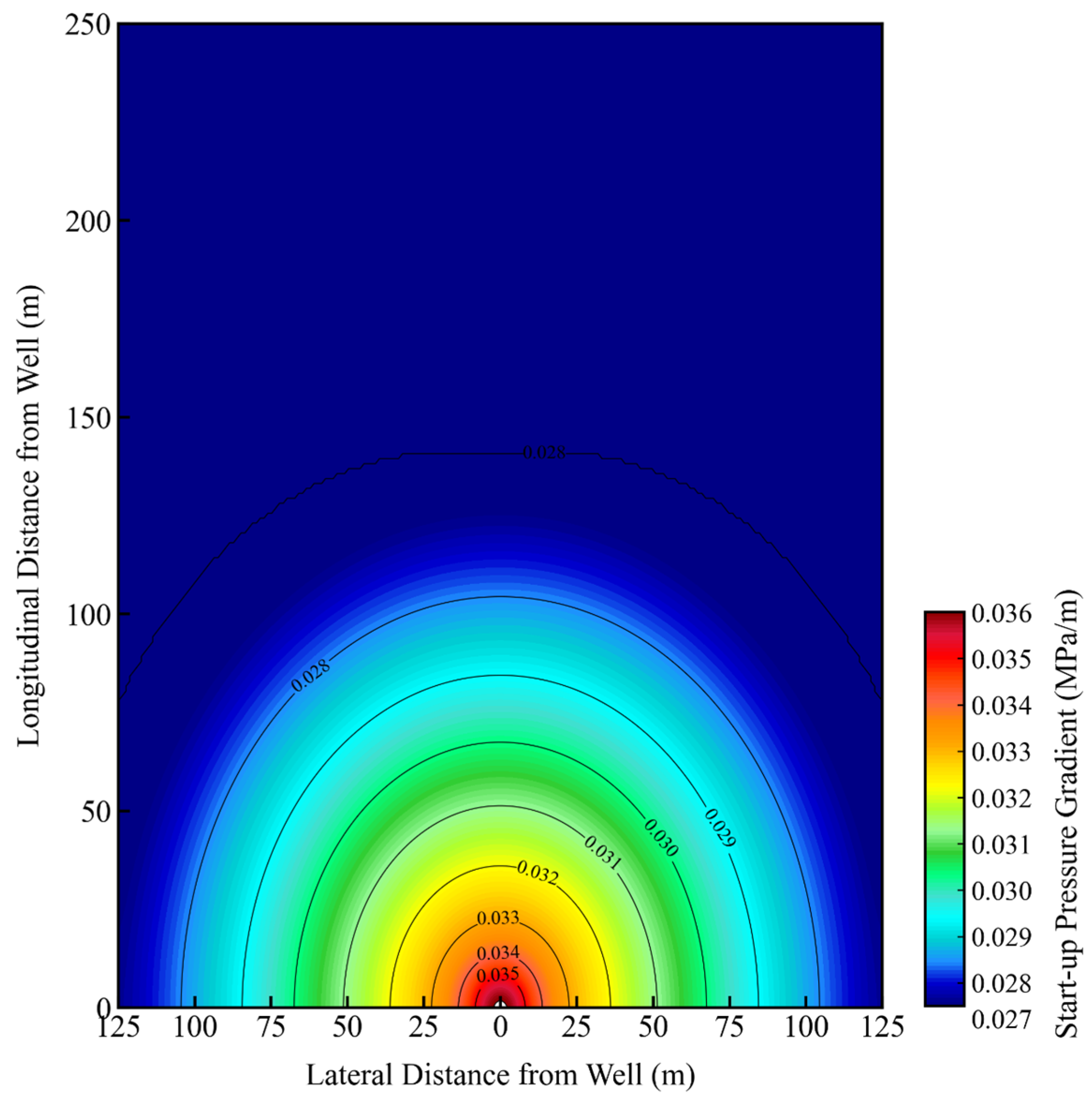
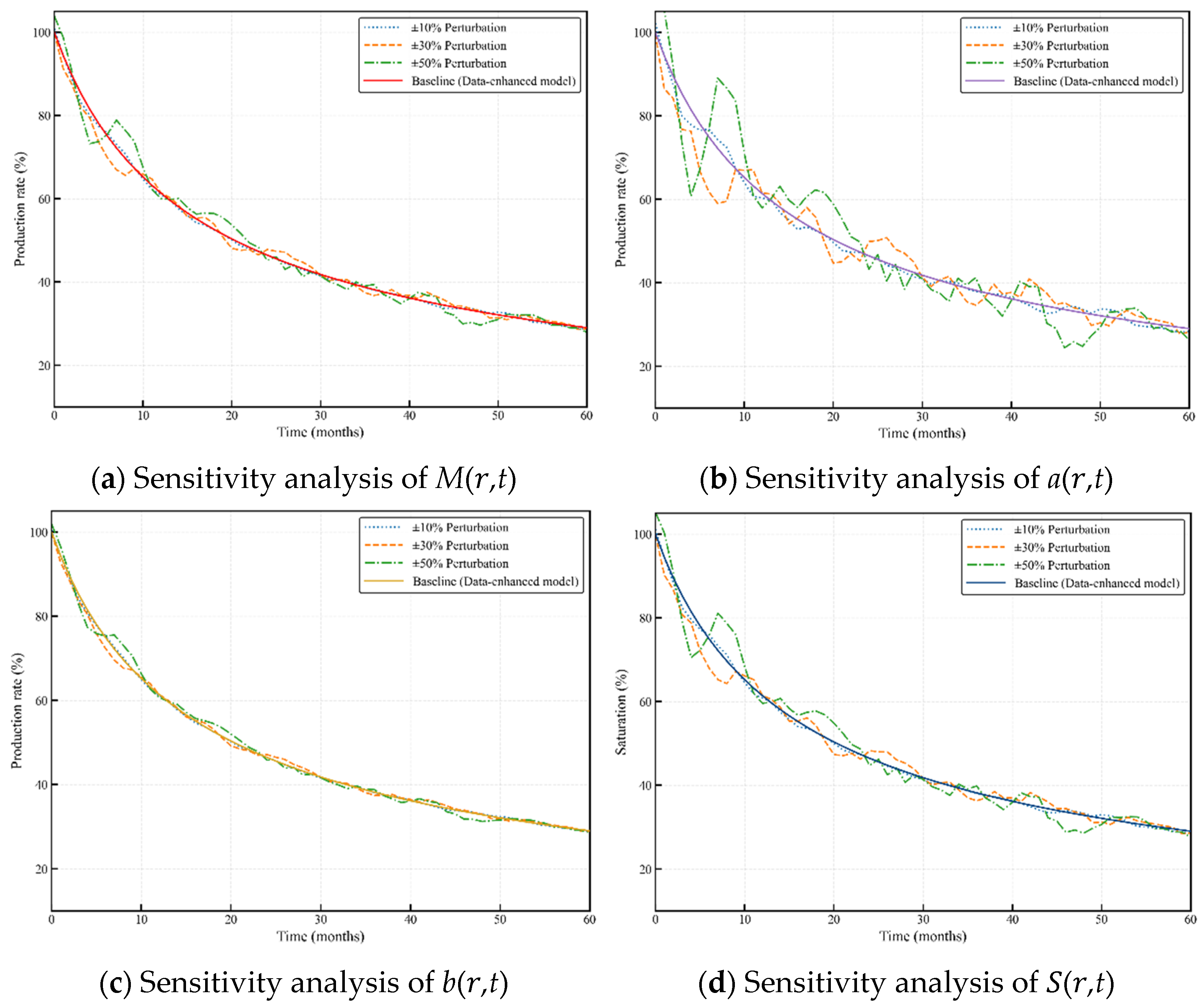


| Well ID | Commercial Simulator | VAR Model | Data-Enhanced Model |
|---|---|---|---|
| X50-5-1 | 12.80 | 3.65 | 2.10 |
| X50-7-2 | 5.40 | 1.26 | 0.95 |
| X51-5-1 | 8.70 | 6.30 | 3.80 |
| X50-6-3 | 7.20 | 2.90 | 1.75 |
| X51-6-2 | 6.50 | 2.40 | 1.40 |
| Mean | 8.12 | 3.30 | 2.00 |
| Model/Method | Mechanism | Daily Production Error (%) (Range) | Cumulative Production Error (%) (Range) |
|---|---|---|---|
| Commercial Simulator | Physics-based Numerical Simulation | 8.12 (5.40–12.80) | 17.9 (14.6–22.5) |
| VAR Model | Pure Data-Driven (Linear Flow) | 3.30 (1.26–6.30) | 14.8 (10.7–20.4) |
| Data-enhanced model | Physics-Constrained + Data-Driven (Variable Start-Up Pressure Gradient) | 2.00 (0.95–3.80) | 2.8 (2.1–3.6) |
Disclaimer/Publisher’s Note: The statements, opinions and data contained in all publications are solely those of the individual author(s) and contributor(s) and not of MDPI and/or the editor(s). MDPI and/or the editor(s) disclaim responsibility for any injury to people or property resulting from any ideas, methods, instructions or products referred to in the content. |
© 2025 by the authors. Licensee MDPI, Basel, Switzerland. This article is an open access article distributed under the terms and conditions of the Creative Commons Attribution (CC BY) license (https://creativecommons.org/licenses/by/4.0/).
Share and Cite
Yu, Q.; Li, C.; Luo, X.; Zhang, Y.; Yu, Y.; Sha, Z.; Zheng, X. Data-Enhanced Variable Start-Up Pressure Gradient Modeling for Production Prediction in Unconventional Reservoirs. Energies 2025, 18, 5744. https://doi.org/10.3390/en18215744
Yu Q, Li C, Luo X, Zhang Y, Yu Y, Sha Z, Zheng X. Data-Enhanced Variable Start-Up Pressure Gradient Modeling for Production Prediction in Unconventional Reservoirs. Energies. 2025; 18(21):5744. https://doi.org/10.3390/en18215744
Chicago/Turabian StyleYu, Qiannan, Chenglong Li, Xin Luo, Yu Zhang, Yang Yu, Zonglun Sha, and Xianbao Zheng. 2025. "Data-Enhanced Variable Start-Up Pressure Gradient Modeling for Production Prediction in Unconventional Reservoirs" Energies 18, no. 21: 5744. https://doi.org/10.3390/en18215744
APA StyleYu, Q., Li, C., Luo, X., Zhang, Y., Yu, Y., Sha, Z., & Zheng, X. (2025). Data-Enhanced Variable Start-Up Pressure Gradient Modeling for Production Prediction in Unconventional Reservoirs. Energies, 18(21), 5744. https://doi.org/10.3390/en18215744






